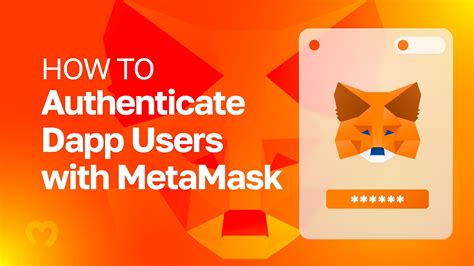authenticating users with Personal Signat in Ethereum on Metask
As an Ethereum developer, you are probably familiar with the importance of authentication and checking users in your applications in this article, we will explore how to authenticate a user using the ETHREUM account through the Personal Metask function.
What is personal?
PersonalStign is a signatory service provided by Metask, allowing users to safely sign transactions on the Ethereum network without exposing their private keys. This feature offers more benefits including:
- Reduced risk of compromise 2FA (two -factor authentication)
- The ability to generate and store session IDs for multiple accounts
- Support for signing a large number of signatures
Why use PersonalSign?

PersonalSign is an excellent option when you have to authenticate users without exposing their private keys. This approach provides more advantages:
* Security : Private keys are never exposed, reducing the risk of compromise 2FA.
* Scalability
: Users can sign several accounts and session IDs without supporting additional costs or complexities.
* Flexibility : Personatign accepts various cases of use, including signing contracts, ether and more.
Personnel configuration on Metask
To start with PersonalSigning on Metask:
- Open the Metask account and browse the “Settings” menu (three horizontal lines in the upper right corner).
- Click “Advanced” and then select “Personal Sign”.
- Generate a new session ID by clicking “Creating the session”.
- Click “Save the session” to save the ID of the session.
authenticating users using PersonalSign
To authenticate a user using his Ethereum account through PersonalSigning:
- Open Metask and browse the “Settings” menu.
- Select “Advanced” and then choose “Personal Sign”.
- Enter the following parameters:
* personal.Sign (necessary): this specifies that you want to use personal signing for authentication.
*session.
* Accountaddress (Mandatory): Ethereum address of the user you authenticate.
- Click “Send” to authenticate the user.
Code for example
Here is an example of a code fragment that demonstrates the use of staff in a JavaScript application:
`JavaScript
const web3 = requires ('web3');
Const Metask = Requirement ('Metask');
// initialize metamark with mnemonic wallet or private key
CON METASK = NEW METASK ({
Accounts: "0xyourwalletaddress",
});
// authenticate the user using the personality
Metamark.personal.sign (
(sessionid) => {
// use the ID of the session to sign a transaction on Ethereum
Web3.eth.Sendransction ({
From: '0xyouracontaddress',
to: '0xyourcipiataDdress',
Value: Web3.utils.Towi ('1', 'eter'),
Data: '',
}, (error, answer) => {
IF (error) {
console.error (error);
} else {
console.log (transaction successfully sent! Session ID: $ {sessionid});
}
});
},
);
// cleanse the ID of the session
Metamark.personal.clearssisionid ();
`
In this example, we use PersonalSigning to sign a transaction on Ethereum using the user’s account address. Then we use the session ID generated to send the transaction.
Conclusion
PersonalSign offers a safe and scalable way to authenticate users with their Ethereum accounts on Metask. By following these steps and examples, you can easily integrate personal in your own applications and protect the sensitive data, while offering a user -free user experience.